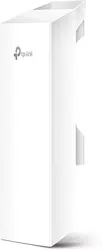Loading ...
Loading ...
Loading ...

Chapter 5 Network Tab
Filtering Policy There are two filtering policies to control the Internet activities:
Allow the packets specified by any enabled access control policy to
pass through the Device.
The hosts listed below are allowed to access the I
nternet under the
rules. While others are forbidden to access.
Deny the packets specified by any enabled access control policy to
pass through the Device.
The hosts listed below are forbidden to access the Internet under the
rules. While others are allowed to access.
To use the access control:
Click Add in the table to create control rules.
Choose one of the protocols from the drop-down list used for the
target, any of IP, TCP, UDP, or ICMP.
Enter the IP address or address range of the hosts that you need to
control, for example 192.168.0.12-192.168.0.25.
Enter the IP address or address range of the targets that you need to
control, for example 192.168.3.12-192.168.3.25.
Specify the port or port range for the target when protocol is TCP or
UDP.
Select the certain day (days) for the rule.
Enter the time rule in HH:MM-HH:MM format, the default value is 00:00-
24:00.
Click Save after finishing the configuration.
Select the added entries, you can edit or delete them.
Static Routing
The function of Static Routing is available only in AP router mode and AP client router (WISP
Client) mode.
A static route is a pre-determined path that network information must travel to reach a specific
host or network. If static route is used properly in the network, it can decrease the network
overhead and improve the speed of forwarding packets.
Static routing is generally suitable for simple network environment, in which users clearly
understand the topology of the network so as to set the routing information correctly. When the
-
63 -
Loading ...
Loading ...
Loading ...
